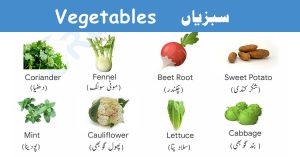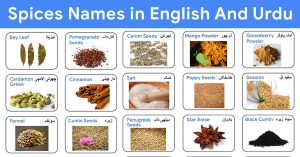If you’re interested in learning about the different types of green leafy vegetables, then you’ve come to the right place! In this post, we’ll be providing you with a list of Green Leafy Vegetable Names, along with detailed descriptions of each. We hope this will help you make the most informed choices when shopping for these nutritious food items, and that you’ll enjoy trying them out!
What are Green Leafy Vegetables
As the name suggests, Leafy Greens are plant leaves eaten as a vegetable and sometimes mixed with additional stems or stalks. The name comes from their green color. Leafy greens include many items ranging from spinach to kale to mustard greens.
They contain all essential nutrients needed for a healthy diet when consumed raw or cooked, along with tons of disease-fighting and prevention elements. In addition, there are many different types of green leafy vegetables, all with their unique benefits.

A to Z list of leafy greens names
- Amaranth leaves
- Artichoke
- Arugula
- Asparagus
- Beet greens
- Broccoli
- Cabbage
- Celery
- Chinese cabbage
- Chives
- Collard greens
- Coriander
- Curry leaves
- Fenugreek
- Dill leaves
- Drumstick greens
- Endive
- Fennel greens
- Fiddlehead greens
- Garden cress
- Grass pea leaves
- Iceberg
- Kale
- Leek
- Lettuce
- Mache
- Mint
- Mustard greens
- Parsley
- Perilla
- Punarnava
- Purslane
- Radicchio
- Rapini
- Romaine
- Roselle leaves
- Saluyot leaves
- Sorrel
- Spinach
- Spring onion
- Stinging nettle
- Sweet basil
- Swiss chard
- Turnip greens
- Water spinach
- Watercress
Leafy Green Vegetable’s Health Benefits
Leafy vegetables are considered an essential part of a healthy diet, as they are rich in vitamins, minerals, antioxidants, fibre, and other nutrients. Green leafy vegetables contain almost all the essential elements that a human body needs to function properly.
Amaranth leaves benefits
Amaranth leaves contain high amounts of protein, calcium, iron, zinc, and essential amino acids that the body can use for growth. Amaranth leaves also maintain the levels of cholesterol in your bloodstream since they have zero cholesterol content.
Artichoke benefits
Artichokes are a type of flower that is edible and has a lot of benefits. Artichokes have been used for medicinal purposes, as a food flavoring, and as a vegetable. Artichokes are a low-calorie, low-fat, cholesterol-free vegetable that is high in fiber.
Arugula benefits
Arugula is a leafy vegetable, commonly referred to as a rocket or roquette in different parts of the world. Arugula is also known by various other names such as garden rocket, Italian cress, and ruche.
As a source of omega-3 fatty acids, vitamin C, and iron, arugula has been proven to help lower cholesterol levels and prevent heart attacks. Furthermore, arugula’s high fiber content promotes digestive health and helps fight diabetes by lowering blood sugar levels. In addition, it is an antioxidant-rich source of vitamins A, C, and K.
Asparagus benefits
Asparagus can lower blood pressure by dilating blood vessels. It is known to have many health benefits, including reducing the risk of heart disease and stroke.
Beet greens benefits
Beet greens are the leaves of beets that are commonly used in salads. There are many benefits of beet greens like they provide iron, folate, and vitamin A. In addition, they contain nitrates which help with blood pressure regulation.
Broccoli benefits
Broccoli is a member of the cruciferous vegetable family and can be used in a variety of dishes. It has long, dark green leaves that form a tight cluster around its stalk.
It contains more antioxidants than any other food and protects against cancer and heart disease. It contains vitamins C, A, and K, which help prevent wrinkles by reducing fine lines and wrinkles around the eyes, mouth, and neck area. In addition, it helps improve memory and concentration.
Cabbage benefits
Cabbage is a leafy green vegetable with a crunchy texture and an earthy flavor. It is widely used in salads, soups, stir-fries, sautés, or braised dishes.
Celery benefits
Celery is a member of the Apiaceae family, and it is a plant that belongs to the parsley genus. It has been cultivated since ancient times and used as food in many different cuisines.
• It helps reduce blood pressure.
• It lowers cholesterol levels.
• It has anti-inflammatory properties which can help treat arthritis, osteoarthritis, and rheumatoid arthritis.
• Celery contains antioxidants like vitamin C, beta-carotene, lutein, zeaxanthin, and alpha-lipoic acid, protecting cells from oxidative damage and disease development.
Chinese cabbage benefits
Chinese cabbage is a great vegetable that is filled with antioxidants and nutrients. It is a powerful anti-inflammatory food that helps with many health issues.
• Protects your eyesight by reducing the risk of cataracts and macular degeneration.
• Helps prevent cancer, heart disease, and strokes.
• Promotes weight loss due to its high fiber content (about 5 grams per cup).
• Improves brain function as it contains folate, which is needed for neurotransmitter synthesis in the brain.
Chives benefits
Chives are members of the onion family. They are commonly used in many dishes as a flavor enhancer but can also make sauces, stocks, soups, and chive butter.
• Chives have anti-inflammatory properties that can help reduce pain and swelling.
• Chives contain vitamin C, which helps fight infections and heal wounds.
• Chives may help regulate blood sugar levels by improving insulin sensitivity or reducing insulin resistance.
Collard greens benefits
Collard greens are a type of cabbage and one of the most popular types of greens. They are primarily grown in southern states such as Georgia, North Carolina, and Tennessee. They have a light flavor with a slight sweetness and a slightly bitter aftertaste. Collard greens can be eaten raw or cooked and sautéed or boiled to produce a dish called chowchow.
• Collard greens contain a high level of calcium and vitamin C.
• They help to maintain healthy bones and teeth.
• They can improve digestion by reducing constipation and bloating.
Coriander benefits
Coriander is a spice, herb, or vegetable obtained from the dried ripe fruit of the plant Coriandrum sativum.
It is also known as Chinese parsley, dhania, dhania-jeera, dhania powder, and cilantro.
The fresh leaves are often used in salads and curries, while the seeds are ground into a fine powder in dishes such as curry pastes and chutneys.
The benefits of coriander are:
• Coriander helps with digestion by relieving gas and bloating.
• It can help with headaches, arthritis, muscle pain, joint pain, and backache.
• It can also be helpful in weight loss because it increases the metabolic rate, which leads to increased fat burning over time without causing muscle fatigue or sleepiness.
Curry leaves benefits
Curry leaves are one of the most widely used spices in Indian cuisine. The leaves are dried and powdered to make curry powder mixed with vegetables or meat for a dish.
There are many benefits of curry leaves like:
• It contains an active ingredient called curcumin that has antioxidant properties.
• It has anti-inflammatory properties.
• It can help fight cancer cells by destroying them before they have a chance to multiply.
• Curry leaves also contain phenols that have antibacterial properties.
Fenugreek benefits
Fenugreek is a legume that is used in cooking. It has many benefits, including the ability to increase milk production, lower cholesterol levels, and promote weight loss.
The key benefits of Fenugreek are:
• It can help reduce cholesterol levels.
• It helps lower blood sugar levels.
• It can help prevent diabetes by regulating insulin secretion.
• It can also help regulate blood pressure and alleviate constipation problems.







Pingback: Vegetable Names in English with Pictures - Download Pdf